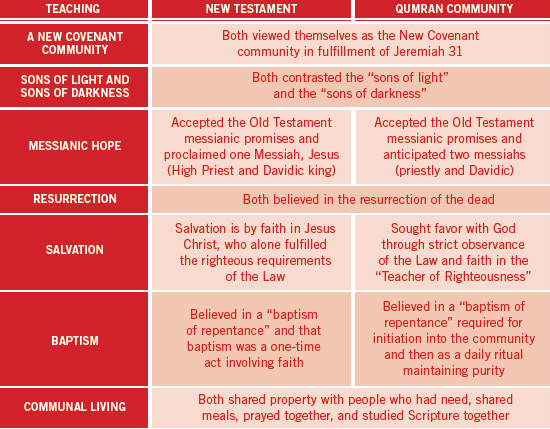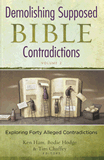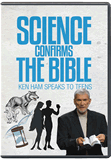
Dead Sea Scrolls—Timeless Treasures from Qumran
Since their discovery, the Dead Sea Scrolls have amazed scholars by their priceless insights into the preservation and proper understanding of God’s infallible Word.
Did you know that one of the greatest archaeological discoveries was just a stone’s throw away? In 1947 a Bedouin stumbled upon ancient scrolls when he tossed a rock into a cave opening and heard pottery shatter. This discovery led to the search for more scrolls. Between 1947 and 1956, some nine hundred manuscripts were discovered in eleven caves around Qumran, along the northwestern shore of the Dead Sea. Over two hundred scrolls were portions of the Bible itself, dated 250 BC–AD 68. Amazingly, every Old Testament book except Esther was represented. These are the Dead Sea Scrolls.
But why do some old scrolls matter to us today? As modern scholars continue to attack the trustworthiness of the Bible, God has given us these remarkable scrolls to study and confirm our confidence in the formation, preservation, translation, and interpretation of His Word. As research advances, we are discovering more and more from these timeless treasures.
Old Testament Formation
Christians and Jews have traditionally believed that the Old Testament was written from approximately 1400 BC to 400 BC and recognized as God’s divinely inspired Word at the time of writing. But many modern scholars claim it is just the words of mere men writing much later, and that their writings were not collected until around AD 90. Do the Dead Sea Scrolls shed light on this matter?
After long delays in publication, the Dead Sea manuscripts were eventually unveiled to the public. Manuscript 4QMMT (also known as Some of the Works of the Law) states, “We have written to you so that you should understand the Book of Moses and the Books of the Prophets and David.”1 This text, dated around 150 BC, is possibly the oldest existing document making reference to a closed three-part Old Testament canon. It supports the words of Jesus in Luke 24:44 referring to the Old Testament as “the Law of Moses and the Prophets and the Psalms.”
This text fits with the claim of the first-century Jewish historian Josephus that no new books were added to Scripture after the time of Ezra around 425 BC.2 Thus 4QMMT is remarkable evidence further illustrating that the Old Testament content was likely fixed in Ezra’s day and not by some Jewish council at Jamnia around AD 90 as is often claimed.
Old Testament Preservation in the Dead Sea Scrolls
Does our Bible today preserve what was originally written? Prior to the discoveries in 1947–1956, the earliest surviving Old Testament manuscripts dated to around AD 900.3 The biblical Qumran scrolls, dated 250 BC – AD 68, take the dating of available Old Testament Hebrew manuscripts back one thousand years.4
Some early scholars questioned the ancient scroll dates ascribed by paleography, which studies changes in ancient lettering over time. However, doubts ended when several scrolls were carbon-14 tested in the 1990s.5 The results confirmed the ancient dates ascribed by paleography. Of particular interest is the Great Isaiah Scroll, the only complete book of the Bible found in the Qumran caves, dated to 125 BC, which was confirmed by two independent tests.6 Thus, the ancient dating of the scrolls seems secure.7
Remarkably, many of these ancient scrolls closely match the Masoretic Text tradition, which modern Hebrew and English Bibles are based upon, confirming the Old Testament text has been faithfully preserved for all these centuries. Further, the scrolls give us a window into the practices of scribes during the Second Temple Period, showing how they prepared, wrote, copied, and made corrections in preserving texts. Thus, the Dead Sea Scrolls fill a major gap in the history of the biblical text and help us see God’s overarching care in preserving the Old Testament.
Old Testament Translation from the Dead Sea Scrolls
The Dead Sea Scrolls also shed light on another question about the Bible’s trustworthiness. The New Testament often quotes the Greek translation of the Old Testament, called the Septuagint, rather than the Hebrew text. Some scholars questioned whether the Septuagint was a legitimate translation of the original Hebrew. However, some biblical manuscripts found at Qumran give witness to another Hebrew text tradition underlying this Greek translation, which validates the Septuagint as a faithful translation of a Hebrew text existing during that time. These finds open up new opportunities for research into the history and value of translations.
Old Testament Interpretation
The Qumran scrolls confirm that we can trust God’s Word.
Can ancient light be shed on modern issues of interpretation? The Qumran scrolls contain the most ancient surviving interpretations of the Genesis Flood. Several first-century BC manuscripts talk about the Flood and confirm that our current understanding of a global, catastrophic flood in Noah’s day is the historical understanding of Genesis 6–9.8 These manuscripts also reveal how these ancient Jews wrestled with difficult matters of interpretation, such as the day-by-day chronology of events during the Flood.
The Qumran scrolls also contain commentaries on many Old Testament books, as well as paraphrases. So these scrolls are of additional value to us as we seek to better understand the details of the Bible. They offer us a unique window into the ancient world of interpretation and shed ancient light on new questions as we seek to interpret God’s Word rightly.
These timeless treasures reveal that the Bedouin’s stone shattered not only a few pottery jars but also a number of false attacks on Scripture. The Qumran scrolls confirm that we can trust God’s Word. As we continue to study the scrolls and learn more about their place in the larger history of the Bible and its interpretation, we expect many new, amazing discoveries and insights to unfold.
A Glimpse into a Jewish Community in New Testament Times
No New Testament books or references to Christianity were found in the Qumran caves, even though Jews occupied the site throughout the New Testament period (until the Roman destruction in AD 68). However, the Qumran scrolls include previously unknown Jewish religious writings, adding to our understanding of Judaism during the New Testament period. For example, these manuscripts reveal the diversity of the Jewish religious groups, beliefs, practices, and politics, which form the New Testament backdrop. Thus, the scrolls provide valuable background information, opening up for modern readers the ancient world in which the New Testament was written. Further, comparison of Qumran teachings with New Testament beliefs can deepen our understanding of New Testament passages in their first-century context. Numerous parallels between New Testament teachings and these earlier Qumran texts also confirm the deep Jewish roots of Christianity.

Answers Magazine
October – December 2012
God’s Word clearly teaches that the earth is young, and the evidence powerfully confirms it. So don’t miss this issue of Answers, which brings you up to speed on the ten best evidences for a young earth. Also discover incredible new examples of the Creator’s undeniable designs, a biblical view on political activism, the latest findings on the Dead Sea scrolls, and much more!
Browse Issue SubscribeFootnotes
- E. Qimron and J. Strugnell, “Qumran Cave 4, 5: Miqsat Ma’ase ha-Torah” in Discoveries in the Judean Desert, vol. 10 (Oxford: Clarendon Press, 1994).
- Flavius Josephus, Against Apion, book 1, chapter 8.
- Two major Hebrew manuscripts represent the Masoretic Text tradition: the Aleppo Codex (c. AD 930) and the Leningrad Codex (AD 1008). The Aleppo Codex was the authoritative text until large portions were destroyed in 1947 by Arab riots. Now the oldest complete manuscript is the Leningrad Codex, which underlies most modern Hebrew and English Bibles.
- F. M. Cross designated three paleographical time periods for the scrolls: Archaic (250–150 BC), Hasmonean (150–30 BC), and Herodian (30 BC – AD 68). Many of the biblical scrolls are dated Hasmonean and early Herodian (2nd–1st centuries BC). A few date to around 250 BC. Thus many scrolls are more than one thousand years older than the previous earliest surviving Old Testament manuscripts.
- Georges Bonani, Susan Ivy, Willy Wölfli, Magen Broshi, Israel Carmi, and John Strugnell, “Radiocarbon Dating of Fourteen Dead Sea Scrolls” in Radiocarbon 34, no. 3 (1992): 843–849; A. J. Timothy Jull, Douglas J. Donahue, Magen Broshi, and Emanuel Tov, “Radiocarbon Dating of Scrolls and Linen Fragments from the Judean Desert” in Radiocarbon 37, no. 1 (1995): 11–19.
- The Great Isaiah Scroll was tested in Zurich (1991) and in Tucson, Arizona (1994). See previous note.
- While radiocarbon dating is based on certain assumptions and has major problems with earlier earth history, it is reasonably accurate back to 400 BC, at the least, because C-14 dates are consistent with biblical chronology and can be correlated with other dating methods.
- Flood texts include 1QapGen (30 BC–AD 30), 4Q252 (30–1 BC), 4Q370 (50–25 BC), and 4Q422 (100–50 BC).
Recommended Resources

Answers in Genesis is an apologetics ministry, dedicated to helping Christians defend their faith and proclaim the good news of Jesus Christ.
- Customer Service 800.778.3390
- © 2025 Answers in Genesis






